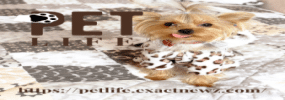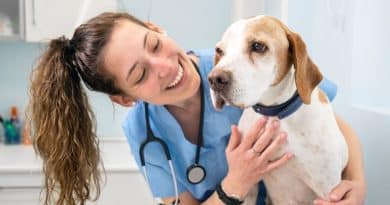Canine Parvovirus – More Dangerous Myths
Parvovirus is such a deadly disease for dogs. Every responsible dog owner wants to protect their beloved family dog from this miserable disease. Despite the best, most loving intentions, though, there exist misconceptions, myths, and misguided advice that can hinder your dog’s recovery.
One thing many people do not realize is just how serious and contagious this disease is, and unfortunately, this can lead to many practices that can harm a dog’s chances of survival, chances of staying parvo-free if he does recover, and chances of keeping the infection away from other dogs. So here is a second list of dangerous misconceptions about parvo. You can find the link to part one at the bottom of this article.
1. My dog must have been in the presence of another sick dog for this to happen. Not so. You can bring this highly contagious and deadly disease home to your dog by touching anything that has been touched by someone who has touched anything the dog has touched.
This isn’t your fault, and neither are the things you have to do when cleaning up after a dog with parvo. And please don’t let yourself feel bad because you need groceries. Just for consideration, it’s good to understand that when your dog has parvo, you clean up after him, then touch the sink faucet handles, the towel you dry your hands with, the counter where you place the treatment, etc.
This happens again later when you’re not treating your dog, and others in the house have to use these things as well. People need to go shopping, to school or work, etc., and the disease goes with any person that has been in the vicinity. Parvo is everywhere. It’s not your fault at all. The disease just exists, so if you just do the very best you can, it’s all you can do. This brings us to myth number two:
2. I washed my hands. I’m no longer carrying the disease on me. It would be very nice if this were the case, but washing your hands does not kill the virus.
3. I can use antibacterial soap or hand sanitizer to clean my hands. Well, there are three things you want to consider about antibacterial soap. It kills only some kinds of bacteria, it may cause bacteria to mutate into forms for which we have no antibiotics (reference the deadly flesh-eating bacteria), but most importantly in regards to parvo: parvo isn’t bacterial. It’s viral.
That means your antibacterial hand soap won’t do much good in that area. It can’t kill the virus. All it can do is physically remove some of the virus from your hands, but not all of it. Also bear in mind: while washing your hands is always a good practice anyway, your sink is now infected with parvo.
So is the bar of soap and the towel you just used. Your sink will need to be bleached as often as you can, which can be accomplished more conveniently by buying a spray bottle from a hardware or garden store and filling it with the solution. You can just leave it on the bathroom counter if you wish. (Don’t forget to open the windows when using bleach.) If you have children in your home, it’s best to have them where they can’t breathe the fumes.
4. I can use rubbing alcohol to clean my hands. Unfortunately, this isn’t enough. A hardy virus-like parvo needs half a cup of bleach to a gallon of water. This solution can lighten your carpet and clothes, but unfortunately, that’s what is necessary.
5. My dog has been exposed to parvo! I better get him vaccinated right away. If a dog is vaccinated within two weeks of contracting the illness, it can make his recovery harder, and in some cases, impossible. Instead, you’ll want to prepare your house and yard the way you would if you were recovering from parvo (bleach).
Then, you can then use Parvaid Kit prevention, which may very well prevent your dog from becoming symptomatic, and if he has become symptomatic, it can help him recover. You can still vaccinate afterward if you wish, but you’ll want to share your concerns with your vet. He should always know about possible exposure before giving the shot so he can determine whether it is safe to administer.
6. My dog is healed. He can no longer get the disease. Unfortunately, this isn’t true, either. I’ve seen dogs relapse even a year after recovering. But that doesn’t mean your dog can never be safe. Prevention and preparedness make excellent guards against this deadly disease. When prevention becomes a habit, your dog is the safest and healthiest he can be.
Copyright 2009 Jana Ortiz
Source by Jana Ortiz




